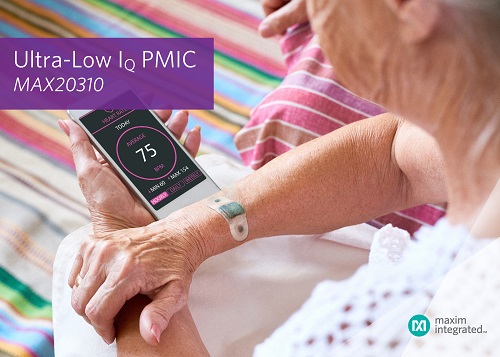
Wearable devices often require sophisticated power tree designs, which have traditionally been made from discrete components, and medical devices need to avoid using the germ-harboring contacts and clips of rechargeable batteries. The result is usually a relatively large design with high quiescent current (IQ ) that impacts both device size and battery life. Maxim’s MAX20310 power management IC (PMIC) addresses both concerns with ultra-low IQ and single-inductor design.

The MAX20310 is a buck-boost switching regulator that can provide two programmable power rails using only one inductor, minimizing the footprint of a wearable device’s power supply. Dual low-dropout regulators (LDOs) create two additional power rails, and system power management features for sequencing power-up are included. Because the regulator can operate with an input voltage as low as 0.7 V, it is suitable for use with Zinc Air and Silver Oxide batteries, allowing designs to use primary cells instead of rechargeables, a boon for medical devices that require hermetically sealed housings.
The PMIC helps designers extend battery life in several ways. The on-chip LDOs feature an IQ of 600 nA per load during sleep modes and can operate as power switches to disconnect loads completely for further demand reduction. The device also has a battery-seal mode with a 10-nA draw to extend shelf life in sealed designs that use primary power cells.
Operating over the –40°C to 85°C temperature range, the MAX20310 is available in a small, 1.63 x 1.63-mm wafer-level package (WLP).
Advertisement
Learn more about Maxim Integrated








